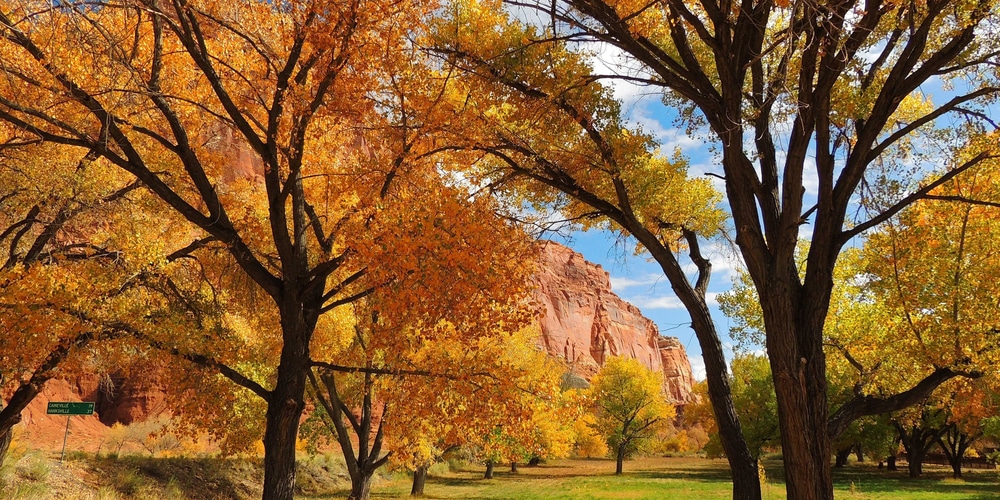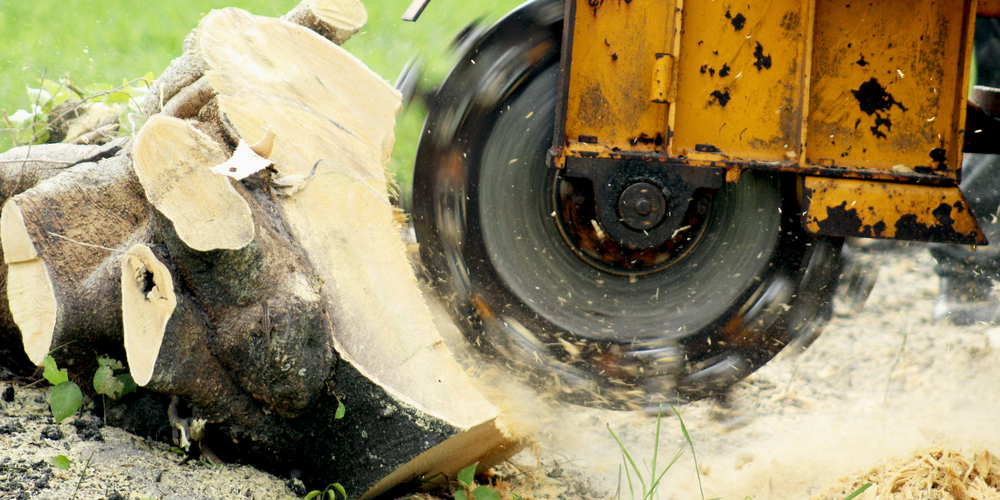Cottonwood trees can be a nuisance as their roots travel far and wide, which can severely damage sidewalks and underground pipes. Let’s look at how to kill cottonwood trees safely and effectively.
How to Kill Cottonwood Trees

If you find yourself dealing with unwanted cottonwood on your property, here’s how to kill cottonwood trees.
Banding or Streaking
Banding, otherwise known as streaking or lacing is a process where you apply a special tree-killing solution to the soil around the plant. The chemical moves to the root, delivered by watering or rainfall, and kills the roots of a tree over some time.
The concentrate is added in lines spaced every two to four feet, then watered in to take effect. Banding is particularly effective and time-saving if you are dealing with several cottonwood trees.
Cutting and Grinding
Cottonwood trees can be removed from a yard or garden with a classic maneuver called ‘cut and grind’. This generally works on smaller cottonwood trees and saplings that are less than six feet tall.
Cutting involves using a hand saw or chainsaw to lop off the tree down to the stump, then grinding the stump until it is removed from the ground.
Alternatively, you can dig up the stump and its surrounding roots so the cottonwood won’t have a chance to regrow. Fortunately, cottonwood stumps are unlikely to regenerate if the tree has been cut down, but you’ll have to deal with the wide-spreading roots.
Remove the Roots and Suckers
Common tree removal methods should take care of cottonwood, but you should also make sure to remove as much of the leftover roots and suckers to prevent regrowth.
You can start removing the roots by digging up around the drip line, or where the canopy lines up on the ground. Once cut, the roots will try to form suckers as a form of natural propagation. Keep a close eye out on these root suckers and remove them on sight using a pair of sharp pruners.
A good way to chemically kill cottonwood tree roots is to use triclopyr or glyphosate herbicide on the ground where you saw them. Alternatively, you can remove the tips and pull them out to get rid of cottonwood suckers organically.
Girdling
With girdling, you cut a section of bark around the trunk to ‘cut off’ nutrients and moisture to the branches and leaves. You will need to girdle a whole circumference or it won’t be effective.
To start, you will need an ax or hatchet to carve through a layer of bark that is around two inches deep. For young and small trees you should girdle a minimum width of two inches, while for older and established cottonwood trees, it is recommended that you make it around eight to ten inches wide.
Once complete, girdling eventually kills the cottonwood tree, and all you need to do is to cut it down and dispose of the debris.
Go with a Foliar Spray
Spraying the cottonwood trees with an herbicide is another effective way to kill them. It’s an applicable solution for trees that are 15 feet or lower. The process involves mixing an herbicide and spraying it directly on the leaves of the cottonwood. The leaves absorb the harmful chemical and bring it down to the roots, eventually killing the whole tree.
Foliar sprays are recommended on a calm day where there is not much wind. Do not spray on a hot day or during noon as it will be less effective. Also, you should water the tree well before spraying for the best results.
The roots will be easy to dig up and dispose of with a foliar spray application. You should also keep an eye out for root suckers, which you can remove using garden shears.
Injecting Tree Herbicide
Lastly, you can treat the cottonwood tree with herbicides injected directly onto the vascular tissue. To start, you can drill a hole or two into the trunk, then inject one to two doses of the herbicide. Wait until the tree has absorbed the chemical before reapplication.
Afterward, wait until the herbicide takes its toll on the cottonwood trees before disposing of the plant. This can take anywhere between a week or so. As always, follow the manufacturer’s instructions and wear protective clothing when handling harmful chemicals.
Related Article: How to Kill a Palm Tree
